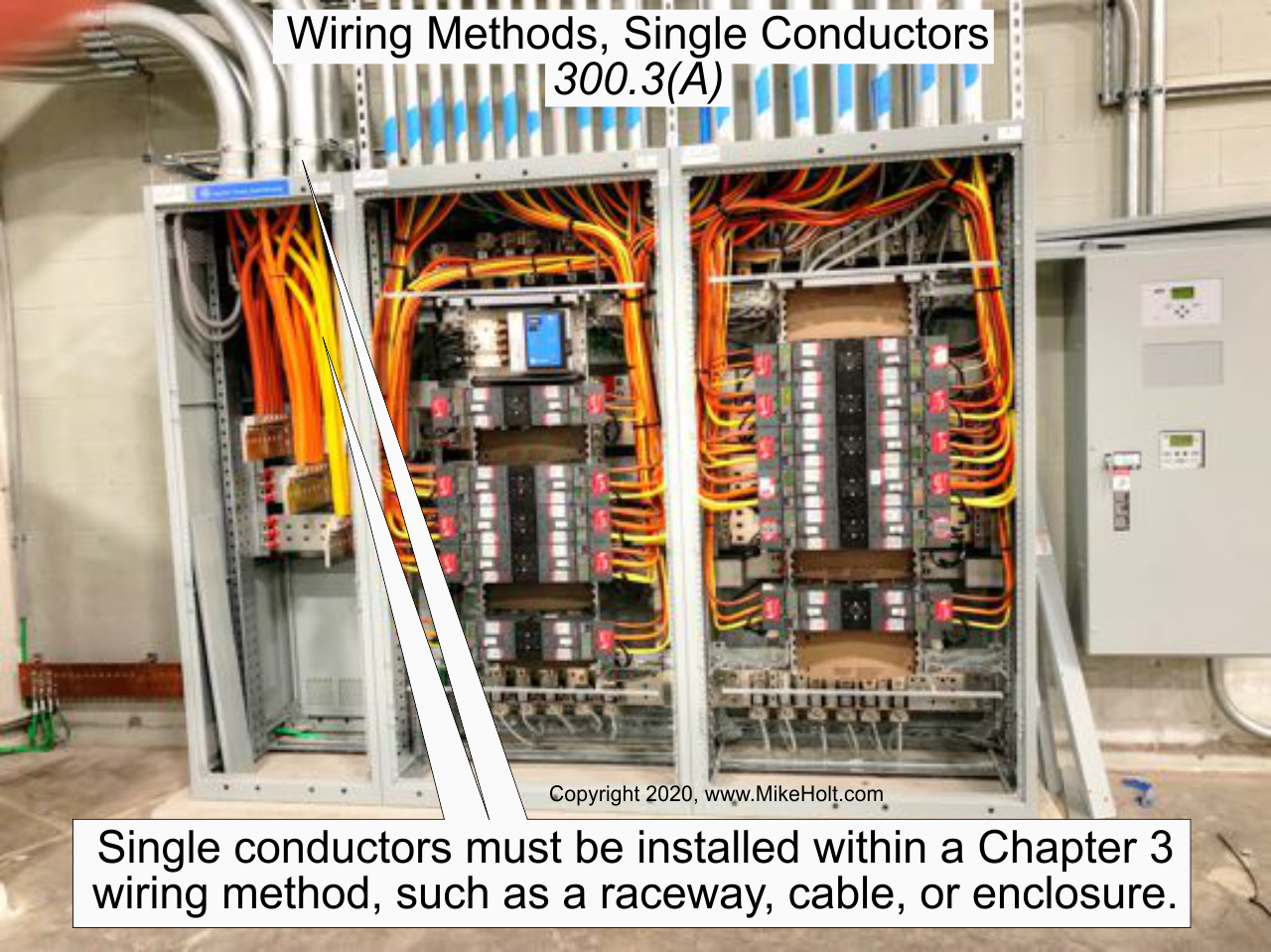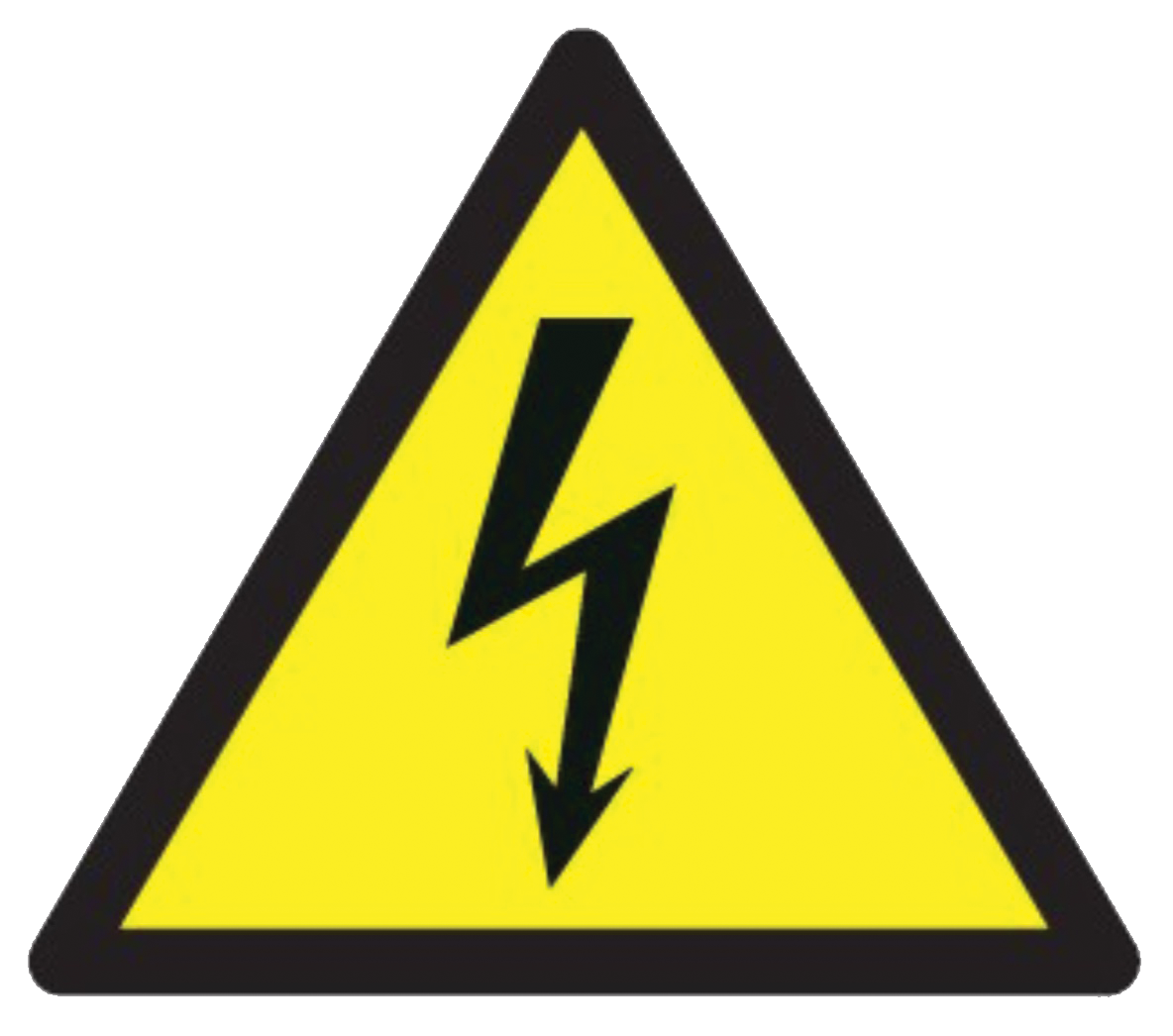|
For EC&M Magazine
By Mike Holt, NEC® Consultant
Here's the follow-up to yesterday's newsletter.
This includes the answers to the questions sent, so you can see how you did.


Figure 01
|
 |
|
Figure 01
|
For EC&M Magazine
By Mike Holt, NEC® Consultant
Here's the follow-up to yesterday's newsletter.
This includes the answers to the questions sent, so you can see how you did.

Note: The answers to these questions are based on the 2020 NEC.
Q1. What are the general NEC requirements related to the installation of conductors?
A1.
Single Conductors. Conductors must be installed in a Chapter 3 wiring method such as in a raceway, cable, or enclosure [300.3(A)].‚Figure 01
Circuit Conductors Grouped Together. All conductors of a circuit, including the neutral and equipment grounding conductors, must be installed together in the same raceway, cable, trench, cord, or cable tray; except as permitted by (1) through (4) [300.3(B)].
(1) Paralleled Installations. Conductors installed in parallel in accordance with 310.10(G) must have all circuit conductor sets grouped together within the same raceway, cable tray, trench, or cable.
Author's Comment:
â–ºGrouping of all conductors of the circuit is to minimize heating of surrounding ferrous metal raceways and enclosures by induction for alternating-current circuits. See 300.20(A).
Connections, taps, or extensions made from paralleled conductors must connect to all conductors of the paralleled set.
Ex: Parallel phase and neutral conductors can be installed in individual underground nonmetallic raceways (Phase A in raceway 1, Phase B in raceway 2, and so forth) as permitted by 300.5(I) Ex 2 if the installation complies with 300.20(B).
(2) Outside a Raceway or an Enclosure. Equipment bonding jumpers can be located outside of a raceway if the bonding jumper is installed in accordance with 250.102(E)(2).
For direct-current circuits, the equipment grounding conductor can be run separately from the circuit conductors in accordance with 250.134(2) Ex 2.
Q2. What are the NEC rules related to mixing of conductors of different systems in the same raceway, cable, or enclosure?
A2.
Conductors of Different Systems [300.3(C)].
(1) Mixing. Power conductors rated 1,000V or less can occupy the same raceway, cable, or enclosure if all conductors have an insulation voltage rating not less than the maximum circuit voltage.
Author's Comment:
â–ºControl, signaling, and communications wiring must be separated from power and lighting circuits so the higher-voltage conductors do not accidentally energize the control, signaling, or communications wiring:
â–ºClass 1 Control circuits, 725.48
â–ºClass 2 Control Circuits, 725.136(A)
â–ºCommunications Circuits, 808.133(A)(1)(c)
â–ºCoaxial Cable, 820.133(A)
â–ºFire Alarm Circuits, 760.136(A)
â–ºSound Circuits, 640.9(C)
Q3. What are the Code rules related to the protection of raceways and cables through wood members?
A3.
Holes through wood framing members for the above cables or raceways must be not less than 1¼ in. from the edge of the wood member. If the edge of a drilled hole in a wood framing member is less than 1¼ in. from the edge, a 116 in. thick steel plate of enough length and width must be installed to protect the wiring method from screws and nails [300.4(A)(1)].‚
Ex 1: A steel plate is not required to protect rigid metal conduit, intermediate metal conduit, PVC conduit, or electrical metallic tubing.
Notches in Wood Members. If notching of wood framing members for cables and raceways is permitted by the building code, a 116 in. thick steel plate of enough length and width must be installed to protect the wiring method laid in those wood notches from screws and nails [300.3(A)(2)].
Ex 1: A steel plate is not required to protect rigid metal conduit, intermediate metal conduit, PVC conduit, or electrical metallic tubing.

 Many wood and metal framing members (especially joists and beams) have specific drilling and/or notching instructions meant to maintain structural integrity. Be sure to check with the building official for building code requirements. Many wood and metal framing members (especially joists and beams) have specific drilling and/or notching instructions meant to maintain structural integrity. Be sure to check with the building official for building code requirements.
|

